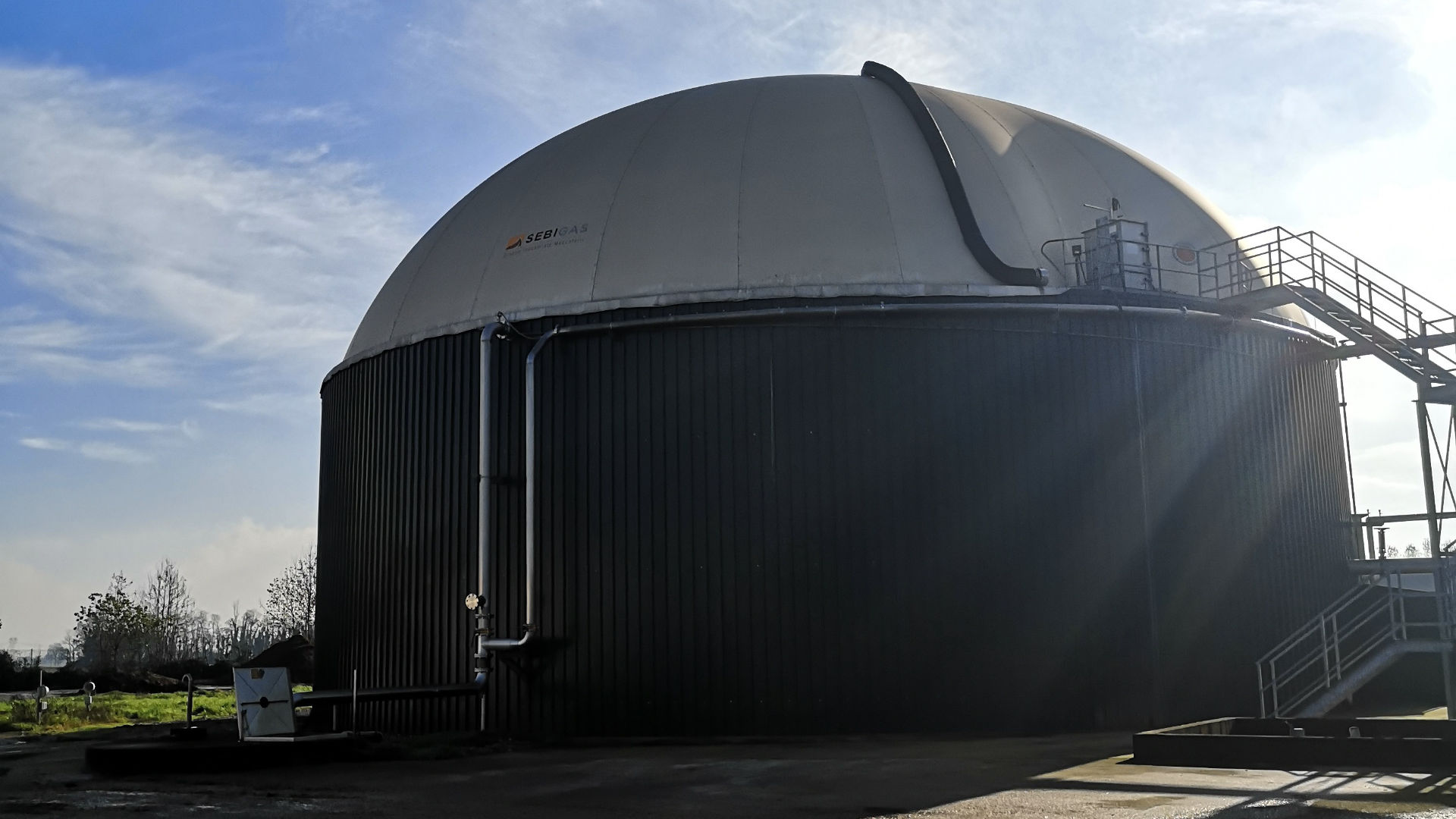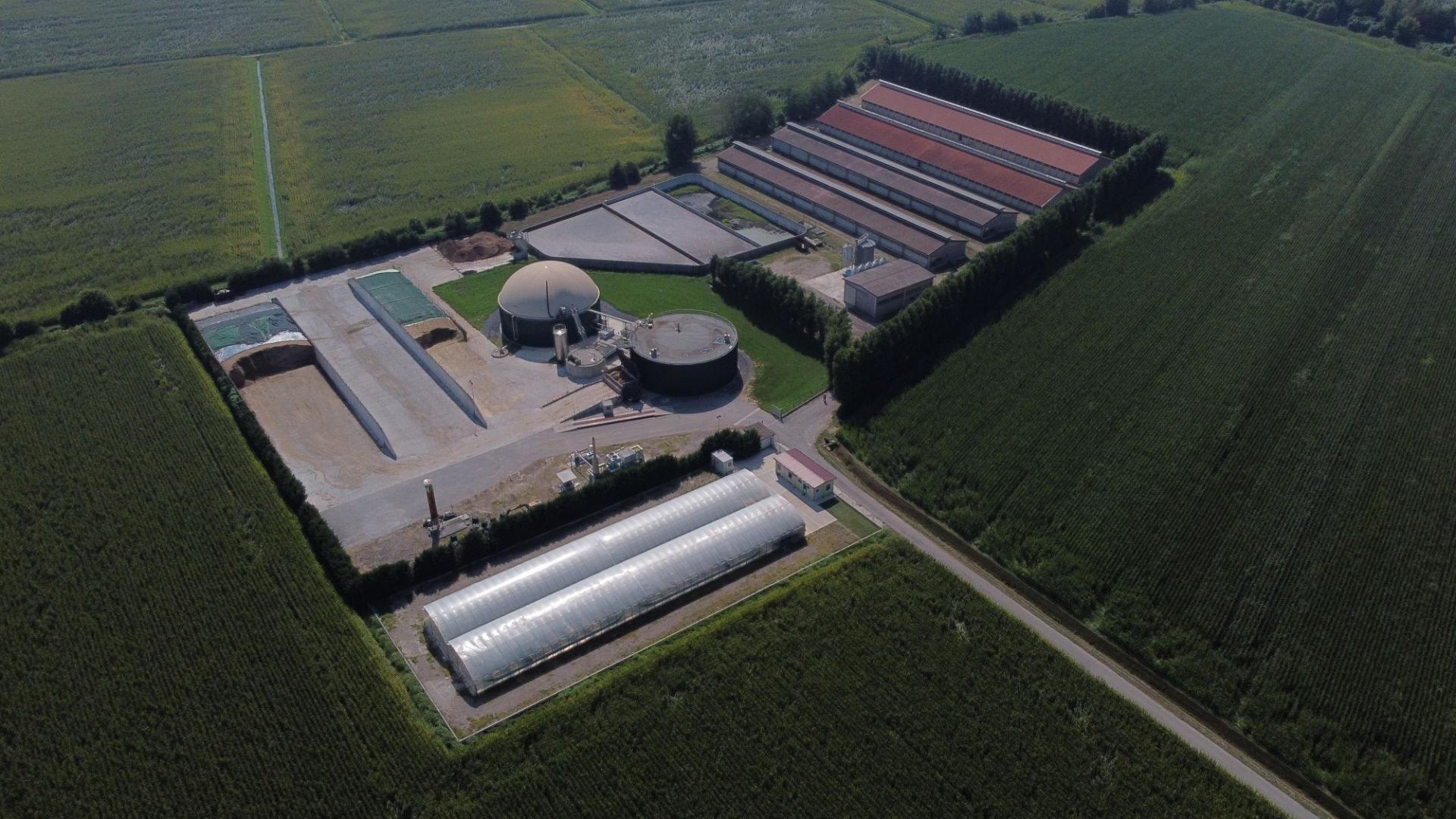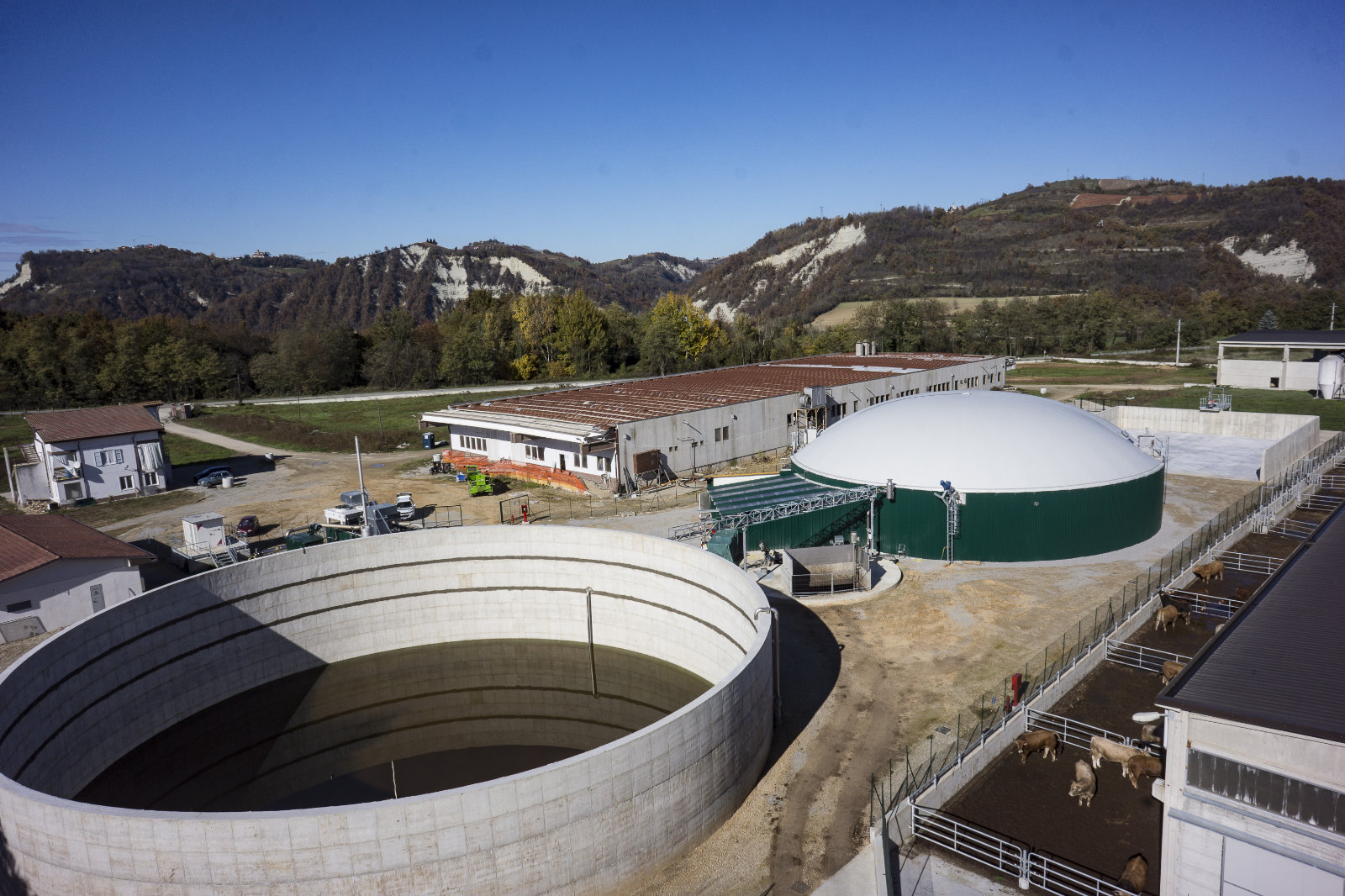Agricultural biogas plants
Installing a plant fed with agricultural matrices is a sustainable investment for farms, providing a supplementary source of income.
In addition, biogas production makes it possible to establish and exploit a synergy with the surrounding communities, increasing the added value of agriculture and optimizing the energy produced in the surrounding area.

Biogas in farming companies
Each biogas plant for agriculture is adapted according to the customer’s requirements and the potential of each matrix used as feed. Following careful analysis, SEBIGAS selects and suggests the best reactor between CSTR and PFR to maximise performance. Furthermore, depending on the recipe, a pre-treatment solution
is implemented to handle the most complex matrices, such as sanitisation, pasteurisation and desanding. In specific cases, a stage is also included that may include technologies such as pasteurisation and flotation. At the end of the process, specific post-treatment steps can be considered for digestate valorisation and nitrogen recovery.

Environmental advantages
Thanks to this solution, it is possible to contribute to the company’s waste management, while also eliminating operating costs and enhancing its energy value. The biogas plant reduces the equivalent CO2 emitted by the effluent,
avoiding the release of CH4 into the atmosphere, which is naturally emitted by these types of waste if not treated with anaerobic digestion. The company also replaces synthetic products with organic ones, enhancing the digestate potential in the surrounding soils.


Economic advantages
The production of electricity, thermal energy or biomethane represents a continuous source of income for the farm, with a clear reduction in the supply from fossil sources. Earmarked for self-consumption, heat demand of various farm processes, or sold to the national grid, it creates a profitable and circular production system.

SALERA
Location: Castelvisconti (CR)
Year of installation: 2011
Feeding: pig manure, rye silage, maize silage
Installed power: 625 kW
Use of electrical/thermal energy: the electricity is sold to the grid with a special feed-in tariff. The thermal energy is used to heat a cultivation of organic spirulina algae
Digestate: Used as a source of nitrogen for the soil.
DEBO
Location: Niella Tanaro (Cuneo)
Year of installation: 2015
Feeding: cattle slurry and manure with straw
Installed power: 300 kW
Use of electrical/thermal energy: The electricity is sold to the grid with a special feed-in tariff. The heat is reused in the farm’s production cycle and to heat the digesters
Digestate: Used as a fertiliser and soil improver, replacing synthetic products
BIOQUERCY
Location: Gramat (France)
Year of installation: 2018
Feeding: Slaughterhouse waste and by-products
Installed power: 1.800 kW
Use of electrical/thermal energy: The electricity is fed into the grid under an incentive scheme, the thermal energy is used to heat the digesters and for the pasteurisation process
Digestate: Used as an organic fertiliser for the crops around the plant





